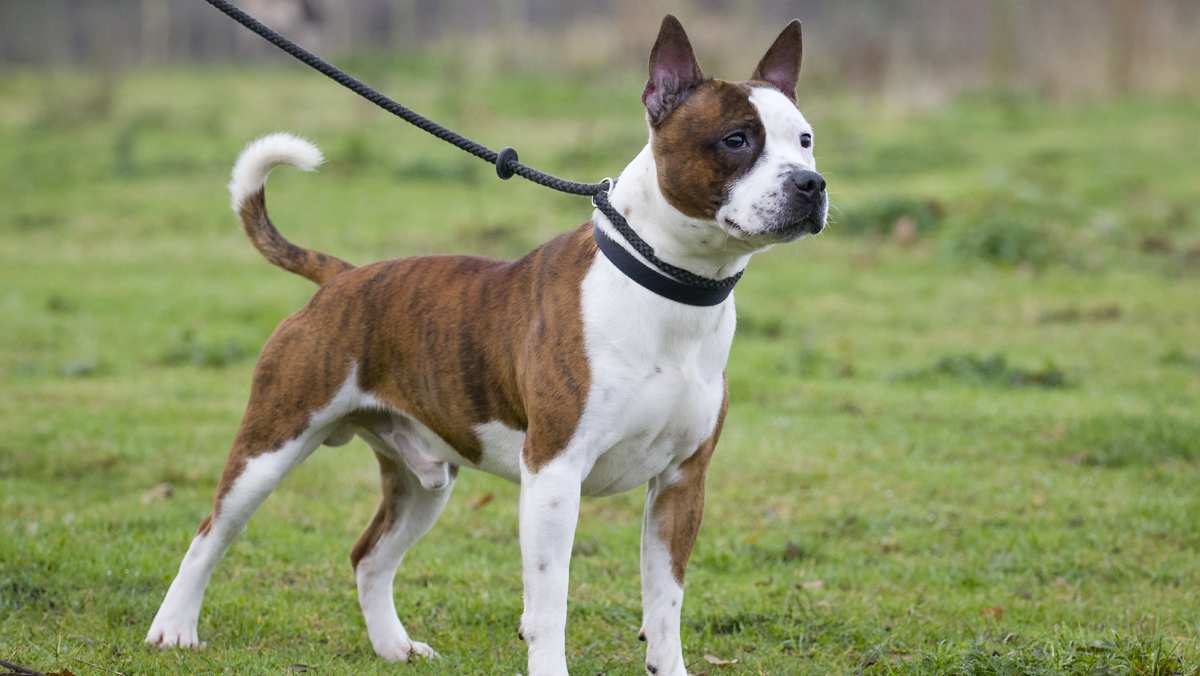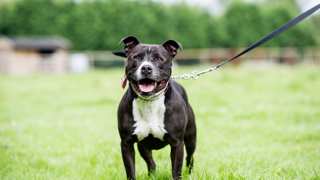In the mid-19th century, the Staffordshire Bull Terrier was one of two breeds produced by James Hinks by crossing a Bulldog with various British Terriers (such as the Manchester and English White Terriers, the latter of which is now extinct) to produce Bull-and-Terriers. The Staffie was not granted the same respect as some of these other Bull-and-Terrier breeds until a few decades later in 1935.
The breed's history, however, goes back a bit further than the name; Staffordshire Bull Terriers came from dogs bred to be smaller, faster and thoroughly fearless in the fighting pits whereby dogs faced off with bears, bulls and eventually, other dogs. Although England outlawed the blood sports of dog-fighting as well as bull- and bear-baiting in 1935, dog-fighting remained popular among the working class that emerged with the Industrial Revolution. Unlike the arenas required for the bull and bear fights, dog fights could be executed in very small spaces and were difficult to find while in progress.
This breed acquired notoriety due to being found primarily among miners and other common people. The nimble dog's strong jaws, remarkable stamina and astounding tolerance for pain made it a favorite among the dog-fighting spectators, and their lack of aggression toward people was especially favored by the handlers for obvious reasons. Ironically, the Staffie was recognized by the Kennel Club (in England) exactly 100 years after the Humane Act of 1835 was passed to officially ban blood sports.
The 1930s was a banner decade for the Staffordshire Bull Terrier. Not only was the breed finally officially recognized one month before the breed's first club was conceived (which was a very unusual event in itself; clubs usually precede recognition in order to acquire it), but there was a number of articles in Our Dogs, a Staffordshire journal, as well as the breed's first club show (August, 1935 at Cradley Heath). In 1936, the breed made a huge seminal splash at the Crufts, and the many awards won by the various Stafford Bull Terriers ensured the dog's place on the world map. Later that same year, at the Wembley National Dog Show, Staffords were given two classes and even the London Star noted the breed's acceptance.
Although Staffies are primarily found in the UK, there is a significant presence in the United States. It is believed that Staffordshire Bull Terriers were first exported to the States just after WWII, but there are many who claim that Bull-and-Terriers (of the type that would later be bred to produce Staffies) had existed in the U.S. as far back as the 19th century. The difference was — and is — that those dogs were produced to be larger and heavier than the breed in England and became the American Staffordshire Bull Terrier. In any case, the American Kennel Club (AKC) eventually recognized the UK-bred Staffordshire Bull Terrier in 1974, the same year that the Staffordshire Bull Terrier Club of America was founded. (It should be noted that the Canadian Kennel Club recognized the breed back in 1952.)
Nevertheless, the Staffordshire Bull Terrier remains resemblant of the pugnacious dog that not 200 years ago ruled the dog-fighting pits. This mere physical resemblance, however, created in the UK a problem about three decades ago, one that continues to this day as well as has affected public opinion in the U.S.
In the 1980s, some people started to breed dogs scarily similar to American Pit Bulls (which in every way are considerably larger than Staffies) and exported them to England as "Irish Staffordshire Bull Terriers" for dog-fighting. Because of the similar names and somewhat similar physiques, the UK press prompted a perception that Staffordshire Bull Terriers were responsible for a number of gruesome attacks that left children mauled, unsuspecting owners dead and an on-going wave of hysteria that has caused the public to confuse the Staffie with other Bull Terriers. Many kennel clubs and Staffie owners have taken to trying to educate the public on the vast differences, but the incorrect media profile has proved difficult to rectify. In March, 2016, however, the UK Ministry of Justice's Sentencing Council took a first step toward resolution by holding accountable problem owners who are responsible for the confusion (that was deliberately conceived as a smokescreen to hide the illegal importation of these other Bull Terriers), and the UK-based Kennel Club has commented that it is a move in the right direction.








